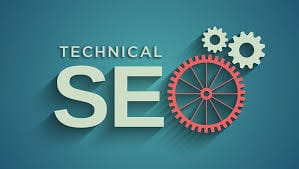As the world adapts to modern technology, the need for Technical SEO has become a non-negotiable aspect in the world of business. In 2025, This is the same for conducting keyword research, which is solely a part of a structured process dealing with code optimization.
This article will provide details for the Technical SEO Checklist that every company must have when planning a redesign, working on an existing site, or having a complimentary free SEO audit.
1. Mobile-First & Responsive Web Design
Google’s mobile-first indexing is standard now – so, your website performance and look must be impeccable at every range and screen size.- Make use of touch and mobile friendly buttons and CTAs.
- Do not use annoying pop-up icons.
- Optimize buttons and CTAs for touchscreens
2. Page Speed Optimization
Fast-loading websites reduce bounce rates and increase engagement. Core Web Vitals are a top ranking factor in 2025. The speed at which a website loads can dramatically impact the bounce rate, together with the Core Web Vitals. These factors are very critical when considering ranking in 2025.- Compress images and switch the format to WebP.
- Cache the browser.
- Reduce code for CSS, HTML and JavaScript.
- Work with reliable CDN vendors.
3. Crawlability & Indexability
If your site cannot be effectively crawled or indexed by search engines, it is as if your online presence does not exist.- Submit XML sitemap to Google Search Console
- Maintain a tidy robots.txt file
- Repair broken links and outdated redirects
- Eliminate duplicate content
4. Structured Data & Schema Markup
Schema enhances search engine comprehension of your site information which increases CTR through rich snippets.- Add schema for reviews, faqs, products, and breadcrumbs
- Check markup validity using Google’s rich results test
- Maintain structured data during website updates
5. HTTPS & Security
Maintaining website security goes beyond good practices; it serves as an essential ranking factor.- Implement ssl certificates on all domains and subdomains
- Resolve mixed content issues
- Guard against malware and spam
6. Canonical Tags & URL Structure
- Optimize to prevent duplicate content while ensuring proper prioritization.
- Place canonical tags on every page.
- Adopt short and simple descriptive URLs containing targeted keywords.
- Avoid dynamic URLs if possible.
7. Internal Linking & Navigation
- Enhance understanding of your website’s structure for users and search engines.
- Place keywords in the anchor text
- Ensure shallow click-depth (important pages should be under 3 clicks away)
- Add breadcrumb navigation
- This step improves crawlability and boosts time-on-site, a hidden SEO gem.
8. Technical SEO for Images & Videos
The use of media enhances the overall user experience while simultaneously improving search engine optimization.- Add relevant keywords in the ALT text.
- Use informative file names.
- For large files implement lazy loading.
9. Core Web Vitals Monitoring
Core web vitals defined by Google checks the performance balancing the options of load, interact and stability. The three major constituents are:- Largest Contentful Paint (LCP): <2.5s
- First Input Delay (FID): <100ms
- Cumulative Layout Shift (CLS): <0.1
10. Regular Technical SEO Audits
SEO is never “done.” Performing frequent checks will subsequently ensure there is continuous improvement with regards to performance.- Look into 404s, crawl errors, and all redirect chains.
- Check the usability on mobile devices.
- Evaluate the structured data alongside the core web vitals.



Recent Comments